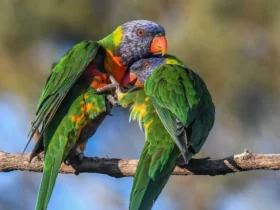In the enchanting realm of waterways, wetlands, and riverbanks, the Malachite Kingfisher (Corythornis cristatus) reigns as a true gem. With its resplendent colors, dainty size, and remarkable fishing skills, this bird captivates the hearts of birdwatchers, photographers, and nature enthusiasts around the world. In this article, we dive into the world of the Malachite Kingfisher, exploring its appearance, behaviors, habitat, and the significance it holds within aquatic ecosystems.
Malachite Kingfisher images
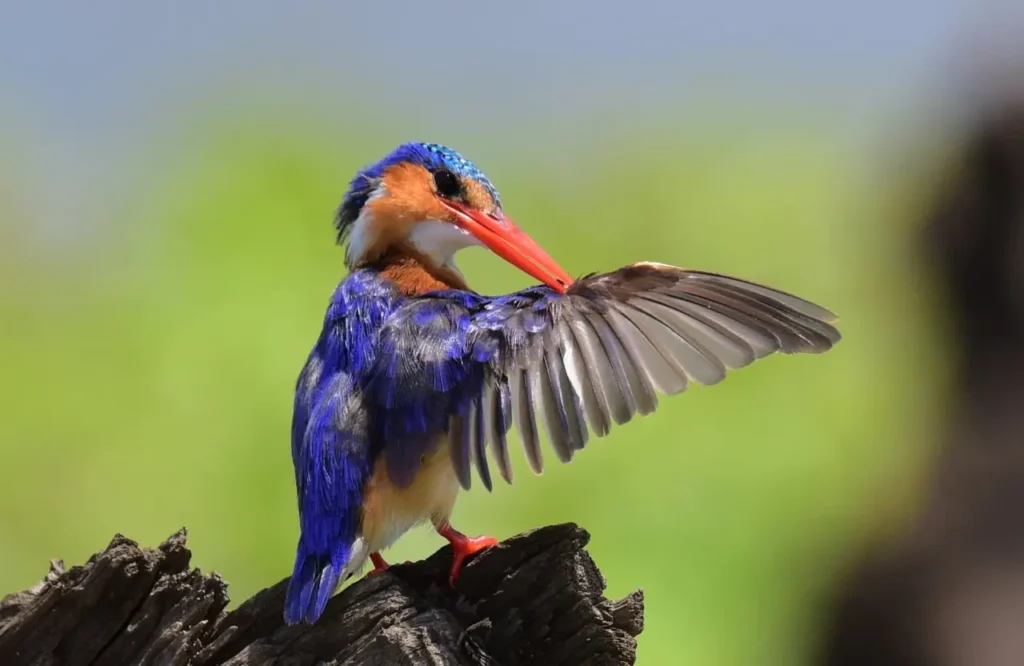
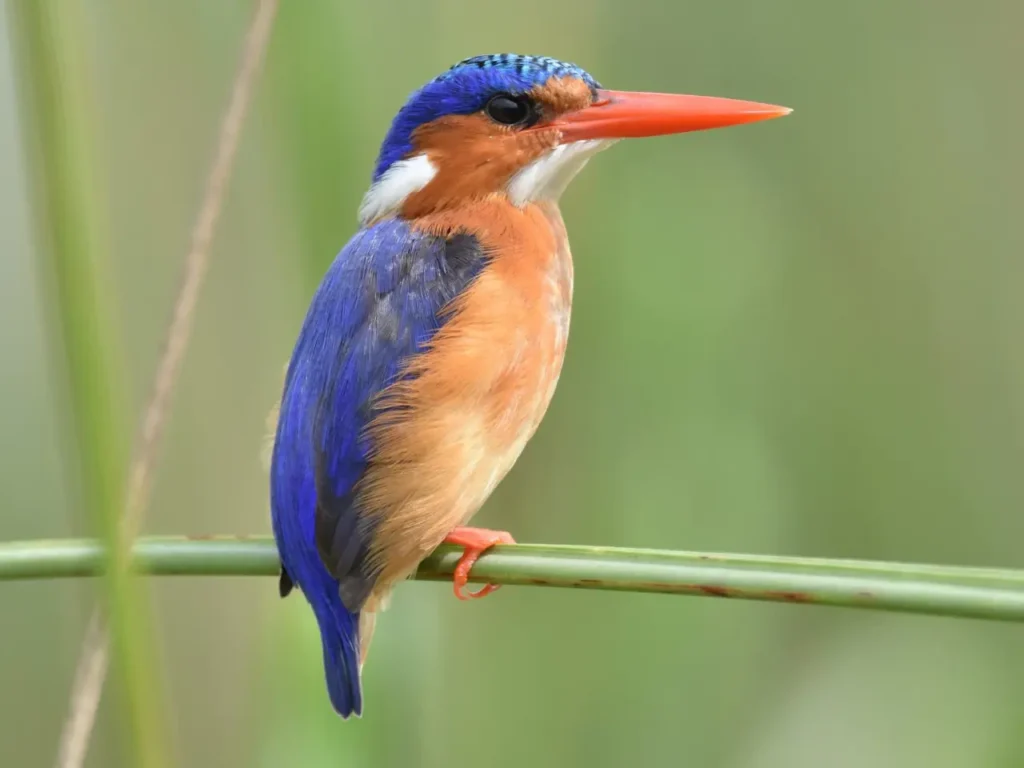
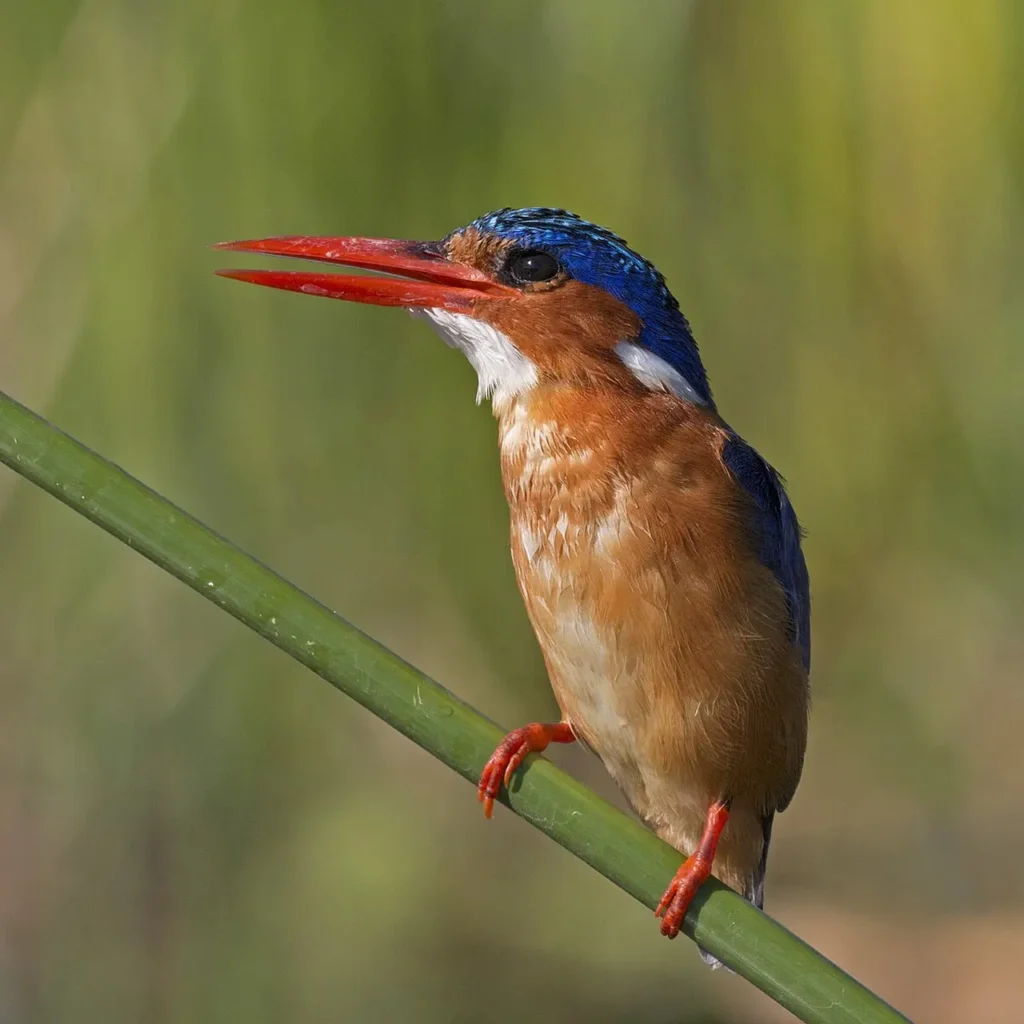
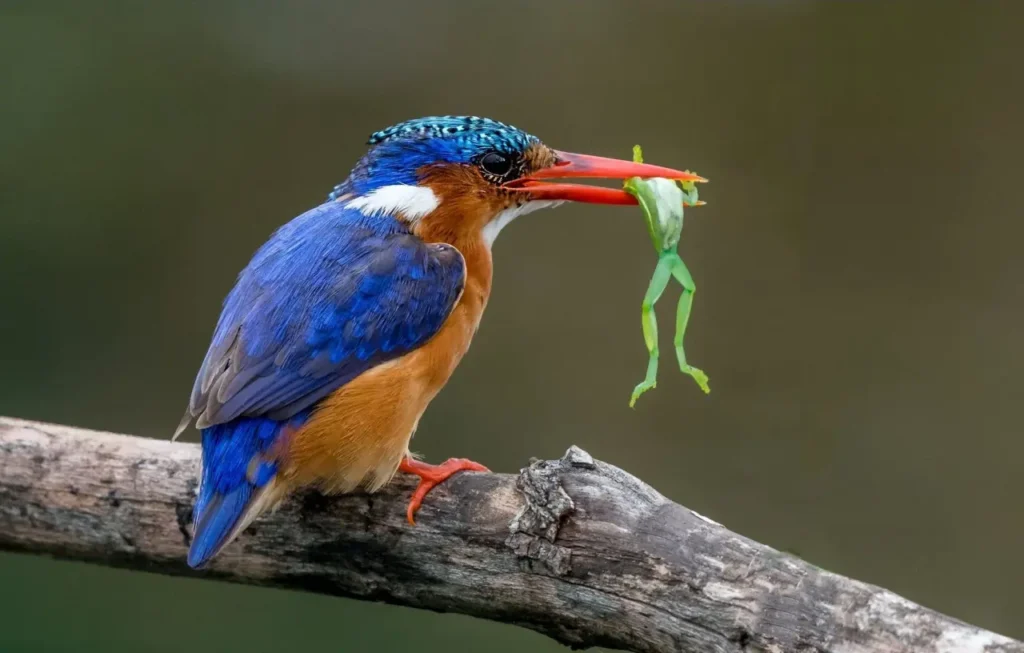
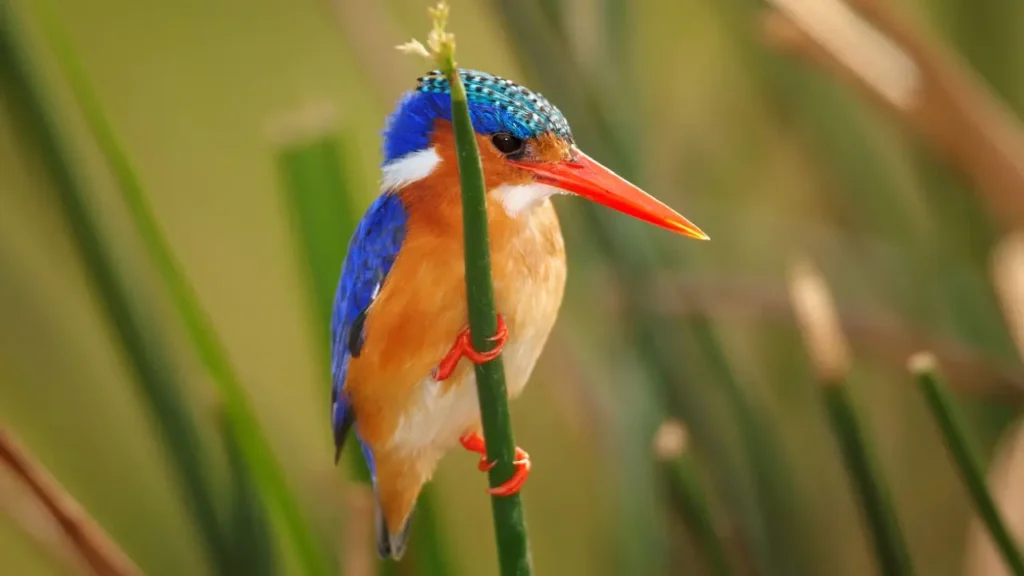
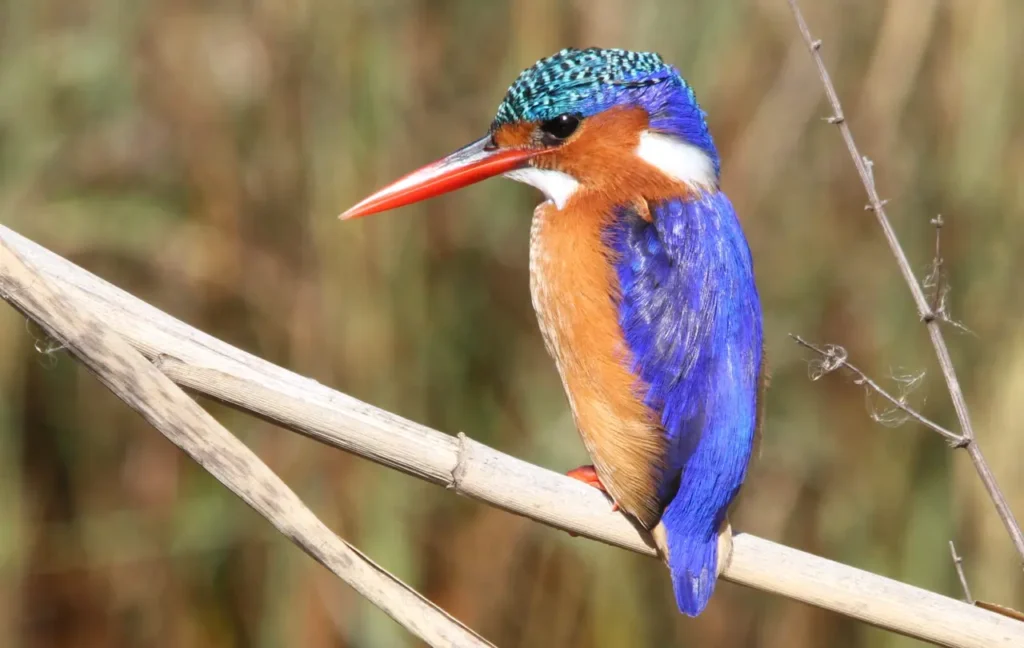
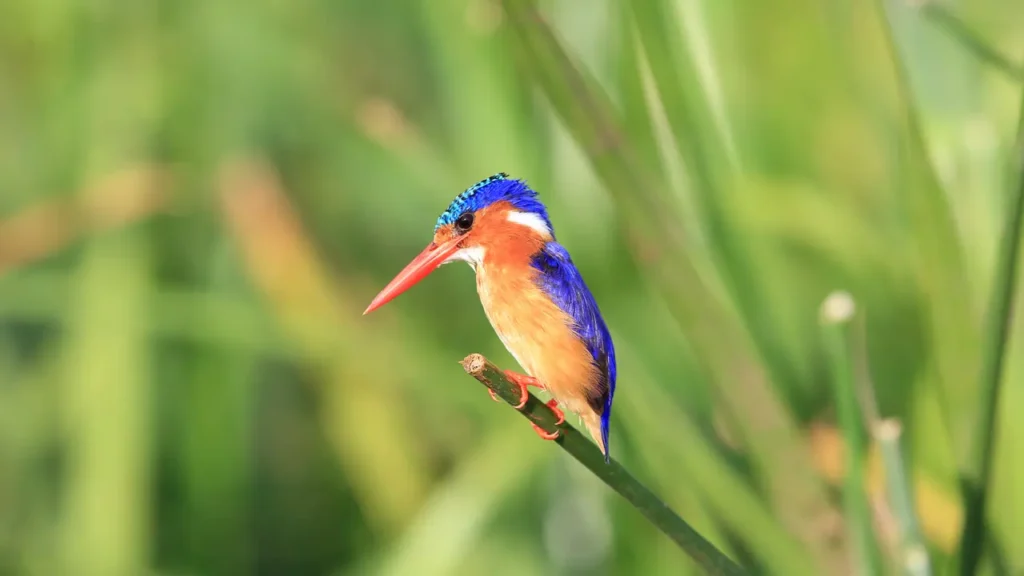
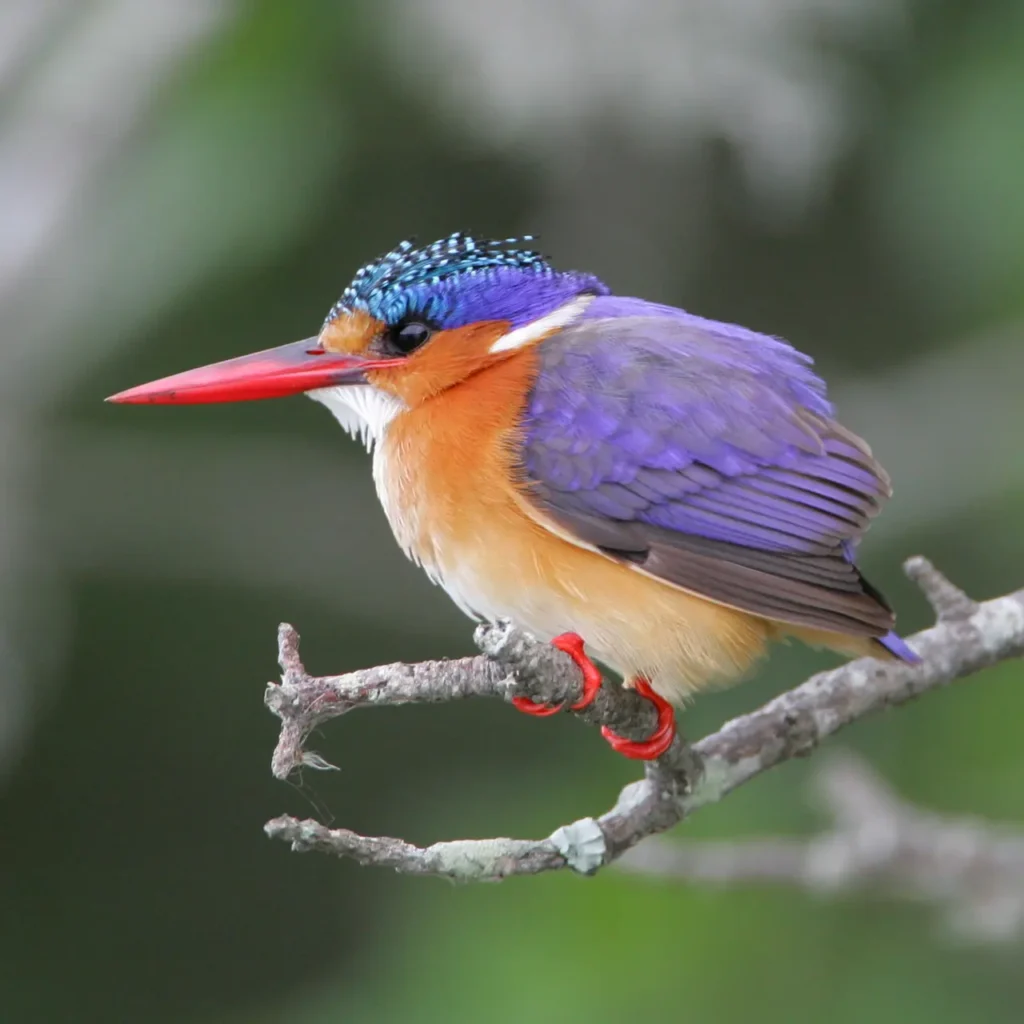
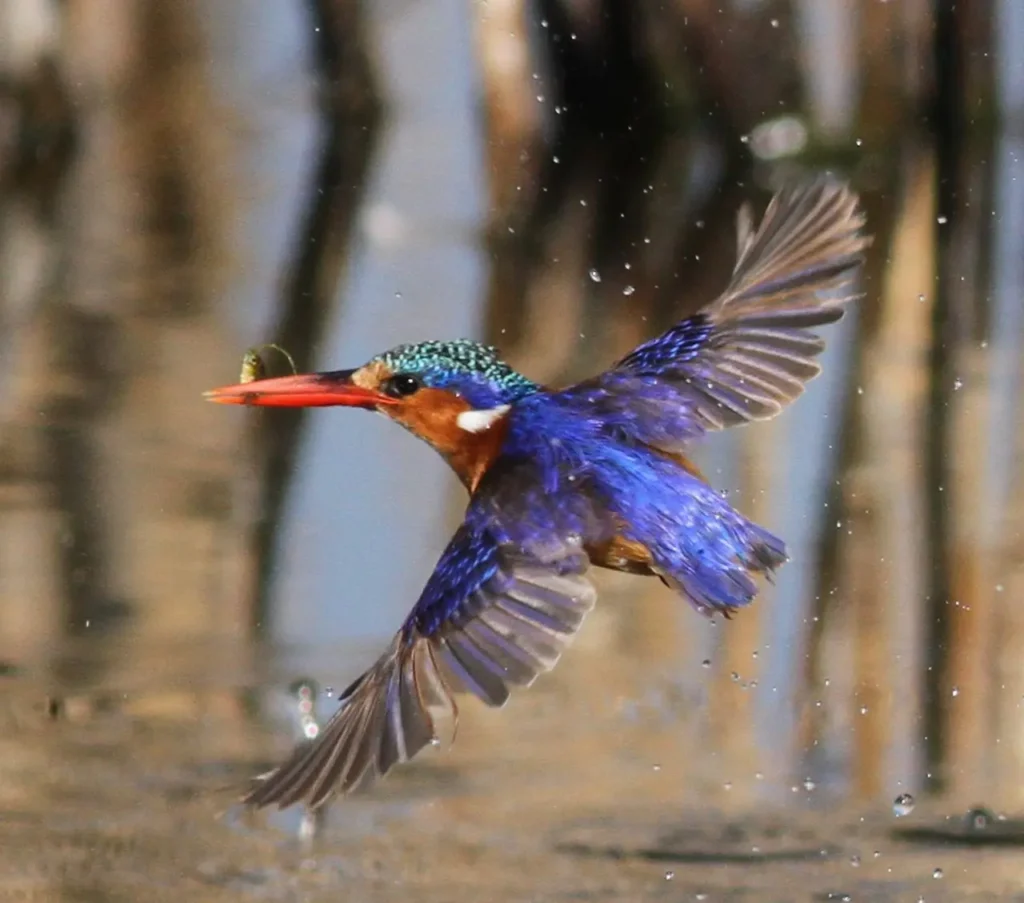
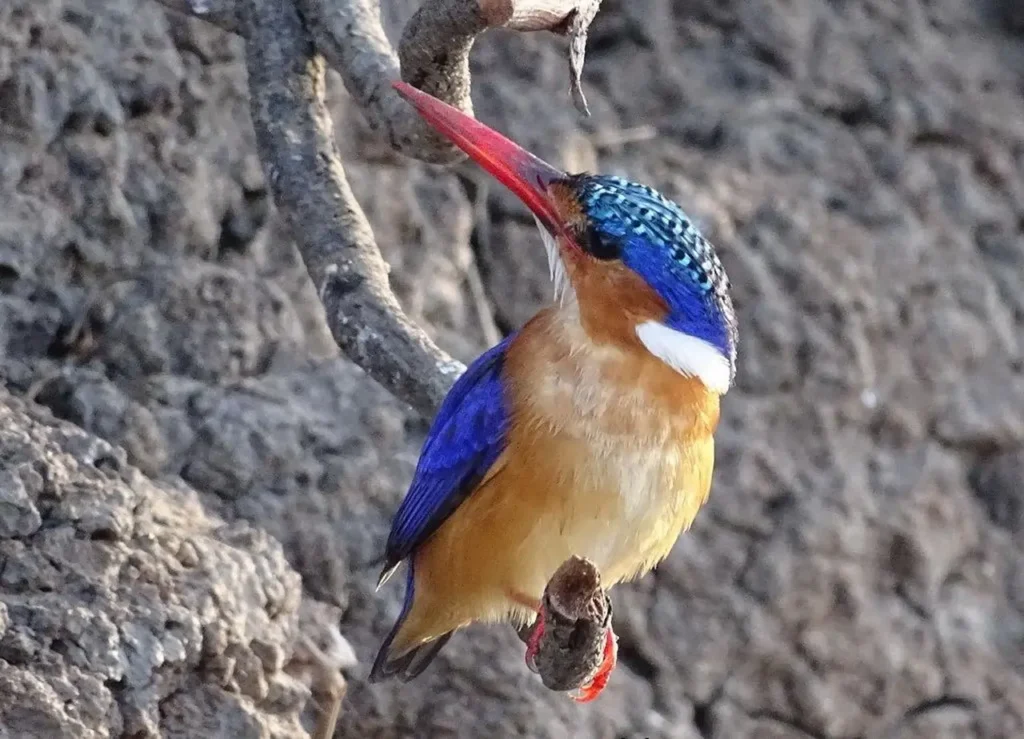
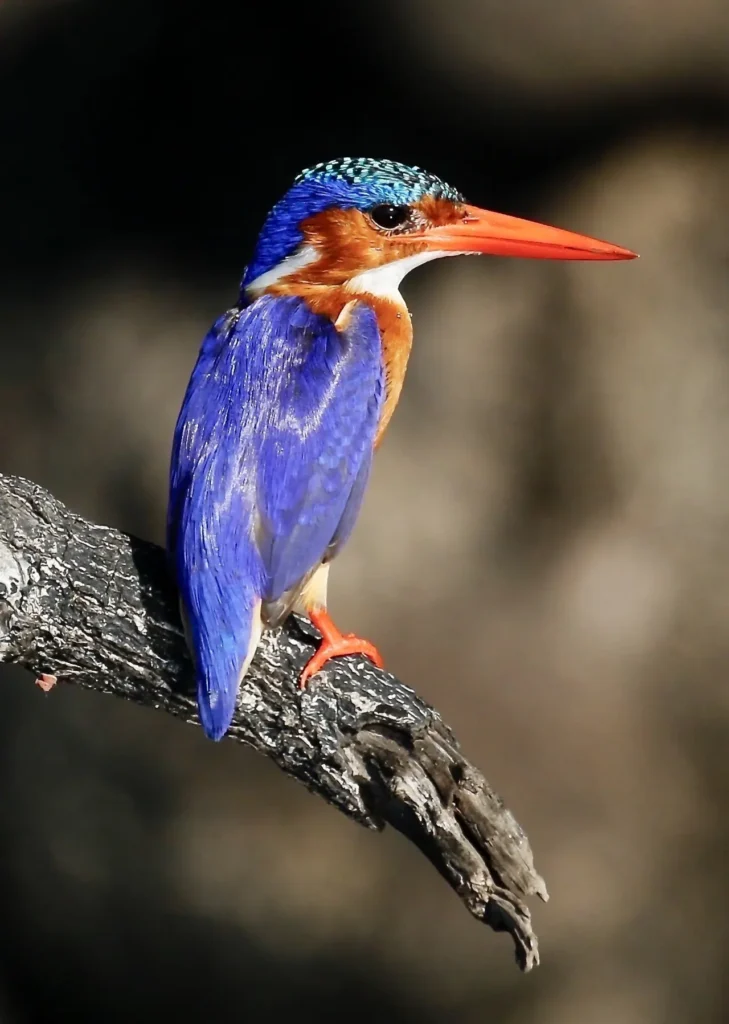
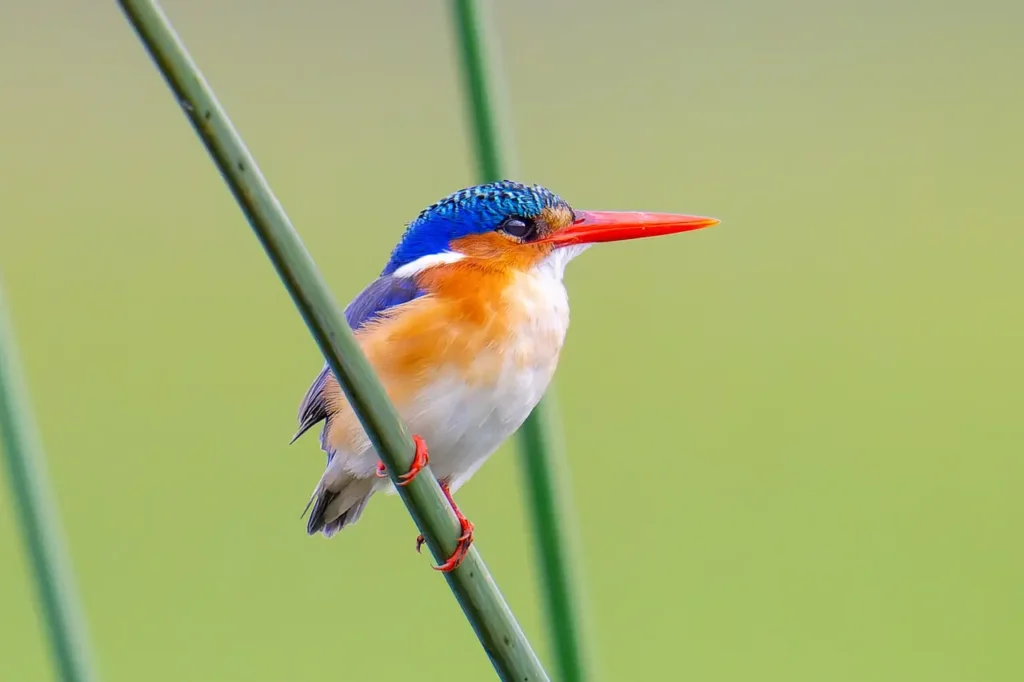
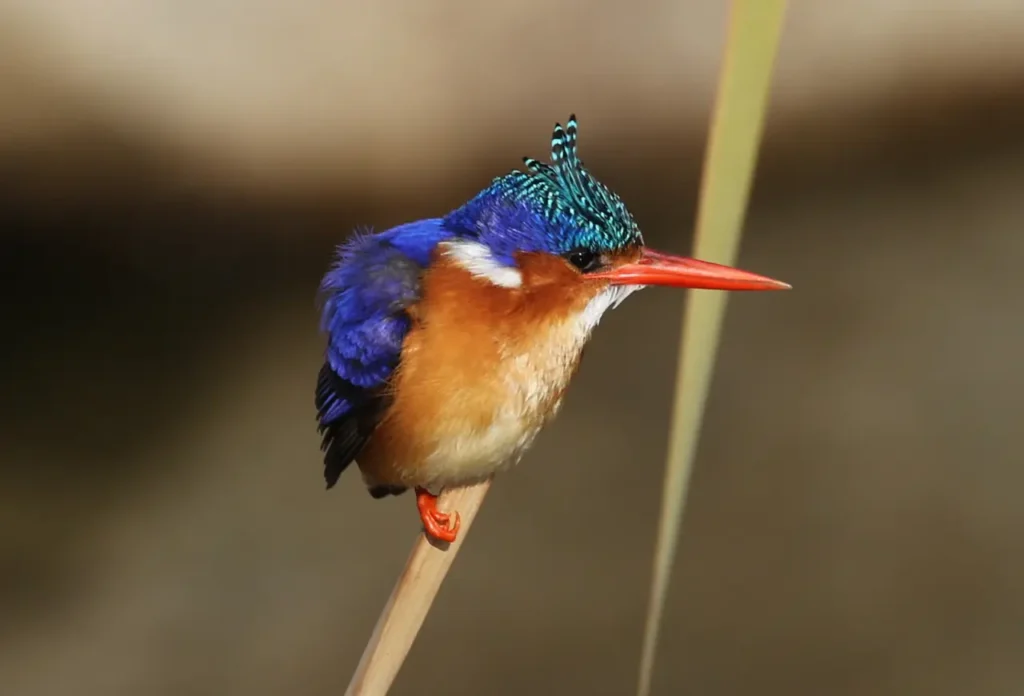
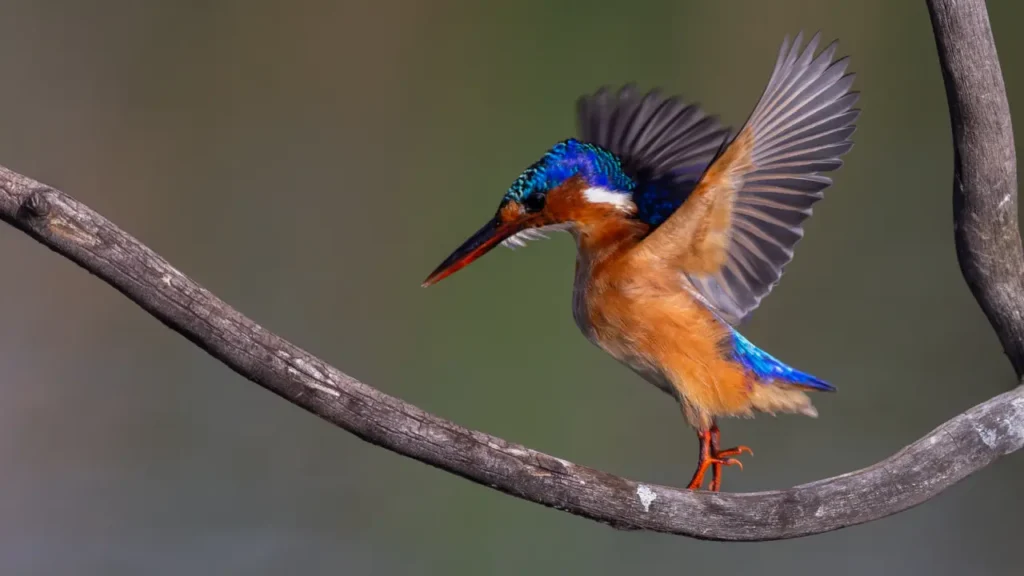
Appearance and Characteristics
The Malachite Kingfisher is a small but vibrant bird, known for its striking appearance. Its plumage features a kaleidoscope of colors that seem to have been borrowed from precious gemstones. The upperparts of the bird are adorned with deep blue-green feathers, reminiscent of the mineral malachite, from which it derives its name. Its underparts showcase hues of brilliant orange and white, adding to its exquisite beauty.
The bird’s distinctive features include a short tail, a long bill, and a compact body that facilitates agile movements. Its relatively small size makes it a delight to observe as it flits over the water’s surface in search of prey.
Hunting and Feeding Behaviors
The Malachite Kingfisher’s primary diet consists of aquatic creatures, particularly fish and insects. It employs a hunting technique similar to other kingfishers, perching on a suitable vantage point near the water’s edge and patiently waiting for its prey to come into view. Once it spots movement in the water, it plunges into the water with remarkable speed and accuracy to capture its quarry.
The kingfisher’s long bill is its primary tool for hunting. Its sharp tip allows it to pierce through the water and grasp its prey securely. After a successful dive, the bird returns to its perch to consume its meal, often banging the captured prey against a branch to remove any excess water before swallowing it whole.
Habitat and Range
The Malachite Kingfisher is typically found near freshwater bodies such as rivers, streams, lakes, and marshes. Its habitat extends across sub-Saharan Africa and various parts of southern Asia. Its preference for water-rich environments is reflected in its aquatic lifestyle, where it relies on its hunting skills to thrive.
Cultural Significance
In some African cultures, the Malachite Kingfisher holds symbolic significance. Its vibrant colors and graceful movements have inspired stories and legends that reflect its beauty and the ecosystems it inhabits.
Conservation and Challenges
While the Malachite Kingfisher is not currently considered threatened, its populations can be impacted by habitat loss due to urbanization, pollution, and changes in water quality. Conservation efforts aimed at protecting wetlands and waterways are essential to ensuring the survival of this captivating bird and the delicate ecosystems it relies on.
The Malachite Kingfisher, with its radiant plumage and skillful fishing techniques, offers a glimpse into the beauty and complexity of aquatic ecosystems. Its presence reminds us of the intricate relationships that thrive along waterways and the importance of preserving these habitats. By admiring and learning about the Malachite Kingfisher, we deepen our connection to the natural world and inspire a commitment to the conservation of our planet’s avian treasures.
